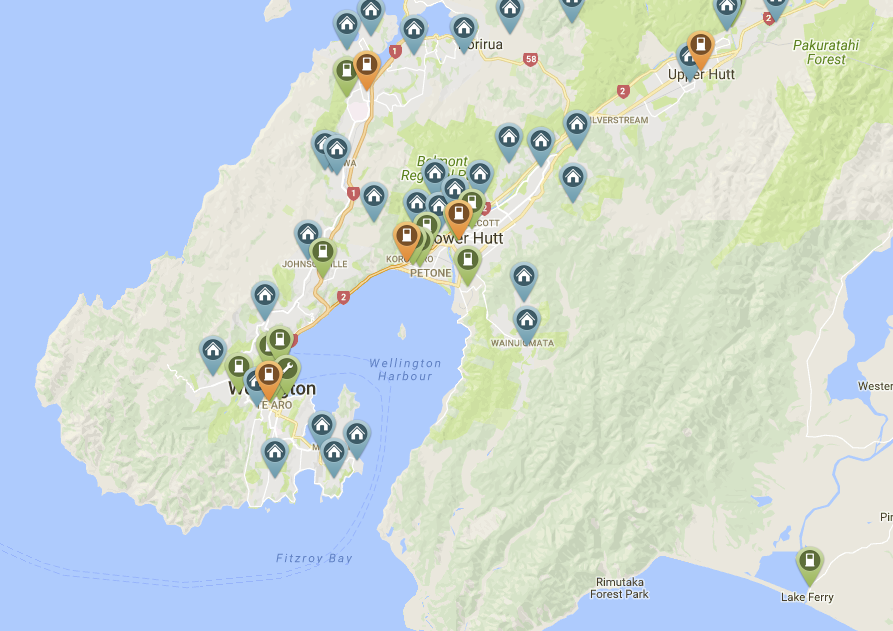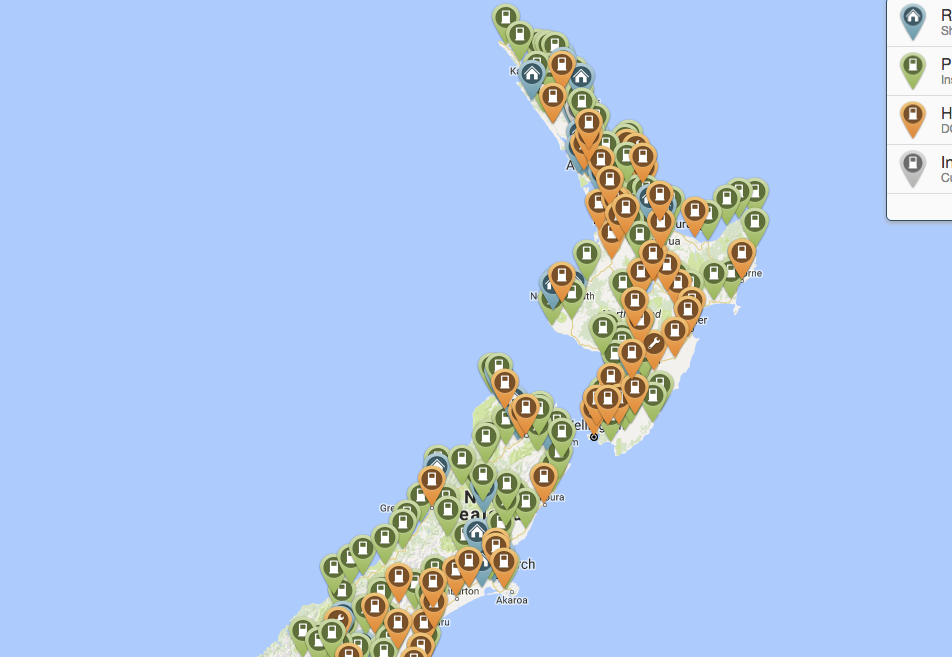A Jetson Future: Electric Vehicles
A JETSON FUTURE: ELECTRIC VEHICLES
““Meet George Jetson...””
Those three words will prompt those of a certain age to join in singing its catchy theme song. This cartoon show featured the Jetson family living in a utopian future. People live in housing in the sky and drive Aerocars that look like flying saucers…ultimately it’s about the (mis)adventures of a futuristic family.
While we live on a hill, not the sky, and while our vehicle doesn’t fly in the sky (yet), our sky blue, second-hand fully electric vehicle (EV) that we purchased at the start of 2017 has helped us take a step closer to living in this Jetson-like utopian future.
And while it doesn’t make the pleasant bubbly-sputtering sound made by the flying cars in the Jetsons, its quiet buzz signals you are driving the future.
Since owning our EV (Electric Vehicle), we’ve had many questions about how this bit of machinery works, so here go my simple answers…
#1. “Wow, that must have been expensive to buy. There’s no way we could afford one.”
While we drool over the more aesthetically pleasing Tesla, the affordable option for our budget was a 2012 Nissan Leaf. With 30,000kms on the clock, we were able to buy this for just over $13,000. Not bad for a zero emission set of wheels for these eco geeks.
Electric cars do come at all different price points though. Today you can get a first generation second hand Nissan Leaf on Trademe from around $9,000 – which should get you a range of around 90-100 km (if not more) – all the way up to a new Tesla at $150,000 with a 400km range.
Unlike with any other cars we’ve owned, the savings we make from not having to put petrol into a vehicle should mean that our Leaf pays for itself in the next few years.
In terms of numbers, in the past 10 months, we’ve driven over 8,000 kms, at a cost of around $450 for electricity, compared to the $2,000 we might have spent in our previous, gas guzzling Volvo V40 (rest in peace dear friend, you gave us many good adventures until another driver smashed into you while you slept and sent you to scrapyard heaven).
When you factor in the fuel saving (and a few other extras we’ll mention later), we figure each year, our car will actually be saving us at least $2,500 in comparison to owning a petrol car. So if we own the car for the next 5 years, even if we can only sell the car for a few thousand dollars at the end, it will have paid for itself in saved petrol costs.
The cool thing is that we could also recondition the battery in the future by having cells replaced and rebalanced. So we should get even more life from it without having to buy a whole new battery unit.
Electric cars need less maintenance too! They do not need oil changes, coolant flushes, mufflers or exhaust systems, saving you hundreds of dollars per year on maintenance. Plus we’ll probably never need to repair or replace the brakes because the car uses regenerative braking almost exclusively - meaning it puts power back into the battery when you cruise down a hill. At the moment, there aren’t any NZ registration road user charges either – a short-term bonus to encourage EV uptake.
#2. “How do you charge it, and what does it cost you each week?”
There are now multiple ways to charge your EV in NZ, but for us, most of our charging is done at home either through a simple regular power cord that plugs into a regular ol’ standard 10 amp power socket. This is a slow charge (also known as mode 1 charging for the geeks), but while we are sleeping once or twice a week, the car is being topped up.
We try to be good citizens by setting our car to charge off-peak in the middle of the night time. The power is cheaper and the energy is likely to have lower Co2 emissions as renewables typically deliver this power in New Zealand.
We’ve recently upgraded to a 32 amp power supply in our garage, this has a dedicated fuse on our board and a nice thick cable for safety. This new power supply feeds our Type 2 EV charging socket (which tops it up faster than the standard three pin plug). We sell Rolec home charge units on our website too
And if you want a faster charge, Eco Geek has a number of DC fast chargers (which are increasing in number) dotted around the country which can top up a Leaf battery in 20-30 minutes. The fast charger network should get you from Wellington to Auckland if you’re adventurous too!
There is a great app called Plugshare, which lists all the public charging spots around the country. There are also people in the EV community who offer their private home charger if your range is limited, along with a number of medium speed chargers at campsites, some petrol stations and other lovely providers. Some are free and some come with a small charge. There are also many more chargers that will be coming online in the next few months and years too.
We don’t really notice the additional cost of the power on our power bill. We changed to Flick Electric over a year ago, so tend to charge at night (you can set the cars onboard charger to only charge the car during off-peak times, e.g midnight to 6am, to make the most of a lower night rate too).
If you want numbers, for us, if we drive around 200kms a week, that’s the equivalent of two full charges. It’s approx 40kw of power, at say a rate of 25 cents, that’s a cost of about $10 per week.
#3. “It must be a bit slower and have less power than a petrol car huh?”
Nope, not at all.
A petrol engine (also known as an internal combustion engine or I.C.E) car is about 20% efficient. You put your foot down and you have to wait for the petrol to feed through to the engine and work through the gears to give you the power you need. The energy in the fuel is often lost as heat and vapour. In fact you lose around 80% of your fuel as wasted heat, mechanical resistance, vapour, and of course the drips of fuel that come out of the tail pipe that can end up in waterways.
EVs have speed! The inner boy racer in you can definitely take on another car at the lights (and will most likely win, unless the car you are taking on is a Telsa – winner of the "World's Greatest Drag Race 7"!).
With an EV, it’s 88% efficient, energy is converted more efficiently into motion. Electric cars have less moving parts, which means you get full torque from the moment you step on the pedal. This gives better acceleration than gas cars and they have zero trouble maintaining high speeds. You just put your foot down and go.
Plus the benefits of no gears and transmission means no jerking when accelerating or slowing down. No need for clutch repairs or any of that nonsense. It also makes it quiet too.
I have recently driven a petrol car after exclusively driving our EV for a number of months, and really noticed the lag when accelerating at intersections. And ouch, filling up the tank hurt too...
#4. “And what about hills?”
We live up what people say is one of the steepest streets in Wellington and our EV has absolutely no problems with hills. Our old Volvo struggled more. We zip up the hill, no problemos – again, it’s pure power when you put your foot down.
Regenerative breaking also means heading down the hill adds to our battery – nice!
#5. How far can you go?
We went for the cheapest EV on the market, a first generation Nissan Leaf with 10 out of 12 bar battery health. Our Leaf battery was fast charged a lot in Japan which has reduced the battery quality and range slightly. We have a reduced range of only 90-100km given its age and battery condition.
At the beginning of owning this EV we definitely got range anxiety until we figured out what we could and could not do. Now, most of our driving is pretty anxiety free. We know our cars limits, but we also know there is usually an emergency top-up option just a few km’s away.
As 95% of our driving is around town within a 50km radius, most of the time, the range is absolutely perfect. And for those occasional holidays, the savings we make from not running a petrol car can be put into hiring a rental car or simply swapping cars with a friend for a weekend.
The range of new EV’s is increasing all the time as battery technology gets denser and more powerful. For now though, we use an old petrol car for the long trips.
Yes, you can definitely travel further afield in an EV and many people have, and are doing this, but it does require a bit of planning and extra time to charge (and coffee drinking along the way).
There are now places to charge on the main highways throughout New Zealand. As more and more users adopt EV’s there are only going to be more charge points popping up. EECA is also helping fund the roll out of more chargers across NZ.
And to wrap up, here are some other perks you might not have considered...
You can start the car heater with the garage door down in winter. If you tried this with a petrol car, you would probably get monoxide poisoning! There is no worrying about having to vent this car in enclosed spaces.
Electric cars have zero tailpipe emissions! The burning of fossil fuels produces hazardous chemicals and greenhouse gas emissions that pollute the air we breathe and contribute to global warming. The only emissions from your electric car are from the generation of electricity. Most of NZ’s electricity comes from hydro and low-emitting energy sources, so it’s a pretty darn good option.
Traffic jams - starting and stopping is super efficient. It’s the reverse to a petrol car - EV’s thrive in traffic jams!
#6. Where do I find out more?
(Usually by the time we’ve answered the 5 questions above, we get to this question…)
There are some great resources out there for Kiwi EV drivers, or those wanting to research their options. There are also various EV owners out there who would be more than willing to give you a test drive to show you the power and the ease of driving electric, and who will be full of all the right kind of answers to your questions.
For more info, do check out:
Visit the Plugshare website and app for charting locations
Read some of the EECA EV articles or NZ Transport Electric Vehicles website




